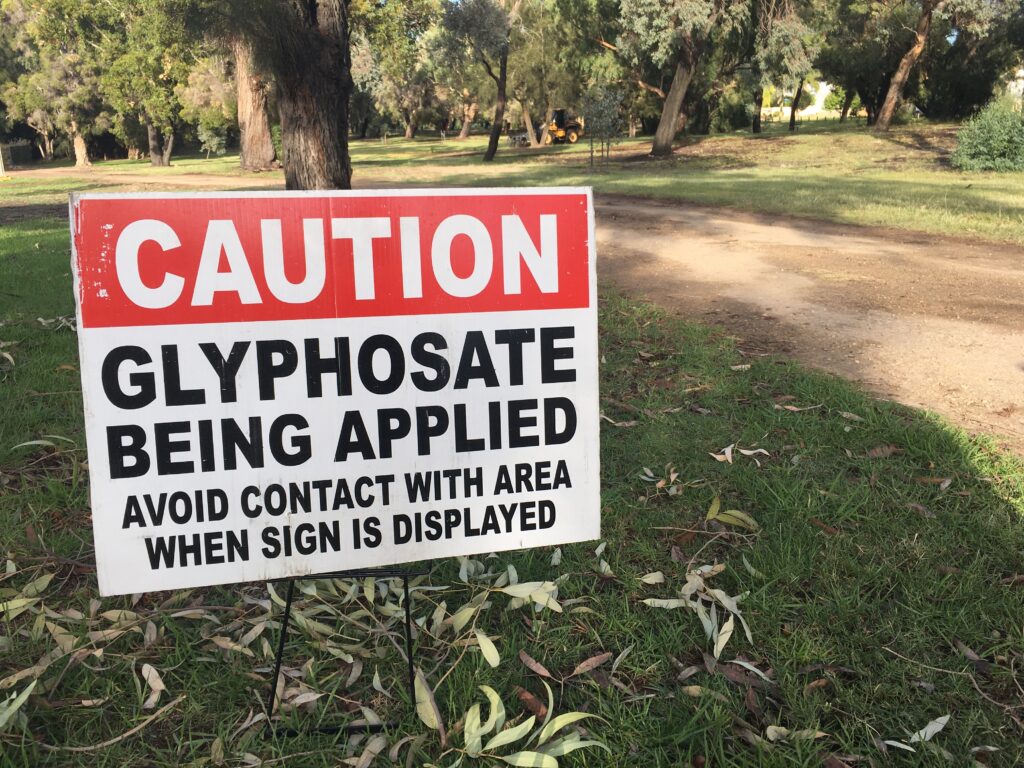PERC and Glyphosate: A Love Story
Andrew O’Shea / 11:00 AM EST•April 29, 2023
Introduction
In recent years, there has been a growing concern about the use of harmful chemicals in agriculture. Among the most controversial are PERC and glyphosate. Both are widely used in traditional farming practices, but have come under scrutiny due to their potential health and environmental impacts. In this blog post, we’ll take a closer look at PERC and glyphosate, and compare the two chemicals as they pose significant threats to our health and the environment.

What is PERC?
With about 80% of dry cleaners across the country still using perchloroethylene, the 2020 residential phase out mandated under federal PERC laws is sure to send many owners into a financial tizzy. PERC, or perchloroethylene, is a chemical solvent that has been used for decades in the dry cleaning industry. It is also used in metal degreasing, textile processing, and as a spot remover in the garment industry. PERC is classified as a hazardous air pollutant and is known to be toxic to humans and the environment. Exposure to PERC can cause a range of health problems, including dizziness, headaches, skin irritation, and respiratory issues. Long-term exposure to PERC has been linked to an increased risk of cancer, including non-Hodgkin’s lymphoma and bladder cancer.

What is Glyphosate?
Glyphosate is an herbicide that is widely used in agriculture to control weeds. It was first introduced by Monsanto in the 1970s and is now the most widely used herbicide in the world. Glyphosate is a controversial chemical and has been linked to a range of health and environmental concerns. It is classified as a probable human carcinogen by the World Health Organization and has been linked to a range of health problems, including cancer, birth defects, and neurological damage. In addition to its potential health impacts, glyphosate has also been linked to environmental problems, including the decline of bee populations and the loss of biodiversity.
Comparing PERC and Glyphosate – Carcinogens Destroying our Environment
While PERC and glyphosate are very different chemicals, they share some similarities in terms of their potential health and environmental impacts. Both chemicals have been linked to cancer and other health problems, and both have been shown to be toxic to the environment. However, there are also some important differences between the two chemicals.
One key difference is their intended use. While PERC is primarily used in industrial applications, glyphosate is widely used in agriculture. This means that glyphosate has a much broader impact on the environment, as it is applied to crops that are consumed by humans and animals. Glyphosate has also been found in water supplies and is known to have negative impacts on aquatic life.
Another important difference is the level of regulation surrounding the two chemicals. While PERC is heavily regulated and its use is limited in many countries, glyphosate is still widely used and is approved for use in many countries, including the United States. This has led to controversy and debate about the safety of glyphosate and calls for more stringent regulation of its use.
PERC and glyphosate are two chemicals that have come under scrutiny due to their potential health and environmental impacts. While they are very different chemicals, both have been linked to cancer and other health problems, and both have negative impacts on the environment.
Conclusion
As we continue to learn more about the potential risks associated with these chemicals, it is important that we take a closer look at our traditional, antiquated farming & garment care systems and work towards more sustainable and environmentally-friendly alternatives. We, here at Presso, intend to do just that.
About Presso
Presso is an Atlanta-based, AI-Robotics company harnessing the power of technology to create the first line of on-demand, energy-efficient, express garment care machines.

